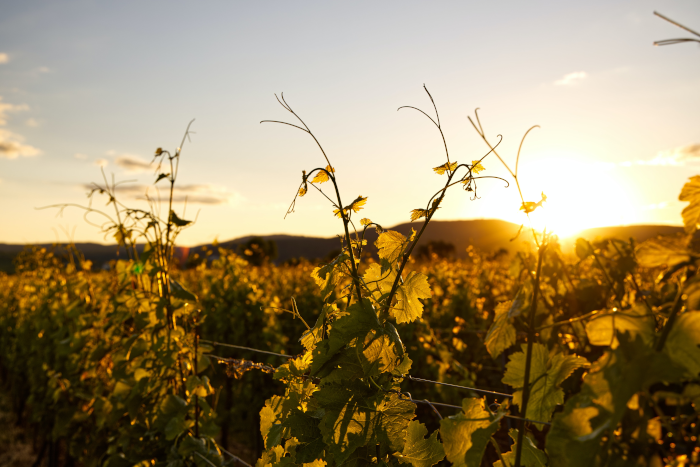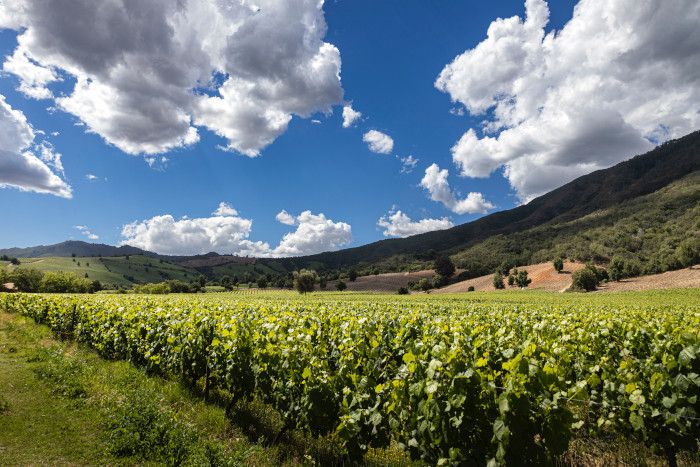The influence of cimate and soil on wine aromas
Discover the fascinating impact of climate and soil on wine aromas.

The aroma of wine is a decisive factor in estimating its quality and character. Its organoleptic qualities are strongly influenced by the climate and the type of soil in which the vine grows; therefore, we can find very different wines made with the same grape variety and the same ageing time.
We are going to explain in depth the importance of these conditioning factors in the aroma and flavour of the wine.
Climate impact: temperature and sunlight
Climate influences wine production through factors such as temperature, precipitation, solar radiation and humidity. Each of these factors can have a significant impact on the way grapes develop.
Temperature
It is probably the climatic factor most involved in the development of the wine's aroma. Grapes need warmth during the day for proper growth and development. But it is also important to have a cool temperature during the night for the grapes to preserve their aromas.
Therefore, aromas develop best in wine-growing areas with cool temperatures, especially at harvest time.
In addition, white grape varieties need lower temperatures than reds for aromas to be fixed.
In general, wines produced in warm climates are dominated by ripe fruit aromas. Wines produced at cooler temperatures have citrus and floral notes.
Sunlight
Solar radiation also influences the content of phenolic compounds in grapes. Tannins and anthocyanins affect the colour, structure, aromas and flavours of the wine.
Wines made from grapes that have received an adequate amount of sunlight will have more phenolic compounds and a higher intensity of aroma and flavour.
Climate impact: rainfall and humidity
Rainfall
Rainfall is related to the number of sugars and aromatic compounds present in the grapes. If there is an excess of rain, the aromas can be diluted, which can negatively affect the wine. For this reason, very rainy climates are not the most suitable for the production of many wines.
Rainfall also plays a role in fruit ripening. For example, late rains can interrupt the ripening process of grapes.

Humidity
Excessive humidity makes the vines more prone to fungal infection and other diseases, which negatively affects the quality of the wine.
Soil types and pH levels
Grapevines take from the soil different macronutrients and micronutrients such as nitrogen, phosphorus, calcium, copper, zinc or iron.
Alkaline soils raise the pH levels of the grapes, which can affect the acidity of the wine and increase the concentration of alcoholic compounds.
Acidic soils, on the other hand, lower the pH levels of the grapes and contribute to improved acidity. This increases the freshness and complexity of the wine's aroma.
Concerning soil composition, differences are also noticeable:
Clay soils
These soils retain moisture which increases the concentration of aromatic compounds. Clay soils produce a wine aroma of great intensity, with notes of ripe fruit and spices.
Sandy soils
They achieve rapid ripening, resulting in aromatic and less structured wines. The resulting wines have fresh and fruity aromas and flavours, with notes of citrus fruits, herbs and flowers and higher acidity.

Slate soils
These are acidic, drained soils that produce wines with intense, mineral aromas and flavours, with notes of red fruits, herbs and spices.
Granitic soils
They are rich in minerals and produce complex wines with mineral and saline notes and good acidity.
Calcareous soils
These soils are ideal for producing very aromatic and complex wines. It is common to find notes of white fruits, such as apple and pear, and floral and citrus notes.
Terroir: combining elements
The concept of "terroir" refers to the unique combination of natural and human factors that influence wine production in a region. It includes climate, soil type, vineyard orientation, altitude, cultivation techniques and local traditions.
Terroir has a determining influence on wine characteristics such as acidity, structure, flavour intensity and aroma.
Influence of winemaking techniques
The hand of the winemaker also plays a decisive role in the final aroma of the wine and the rest of its qualities.
Aromas can be defined by controlling the following variables:
- Irrigation and water stress
- Harvesting at the optimum point of ripeness
- Duration of maceration of the grapes
- The yeast used in fermentation
- Control of oxidation to create more lactic or fruity aromas
- Type of barrel and wine maturation time
Ultimately, the aroma of wine is influenced by a whole host of complex factors. The influence of climate and soil is palpable, but the expertise and experience of the winemakers also help to build the personality of each wine.